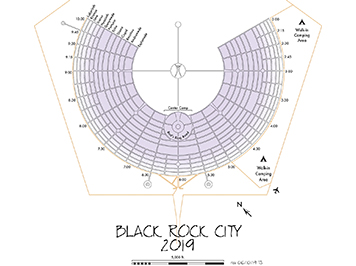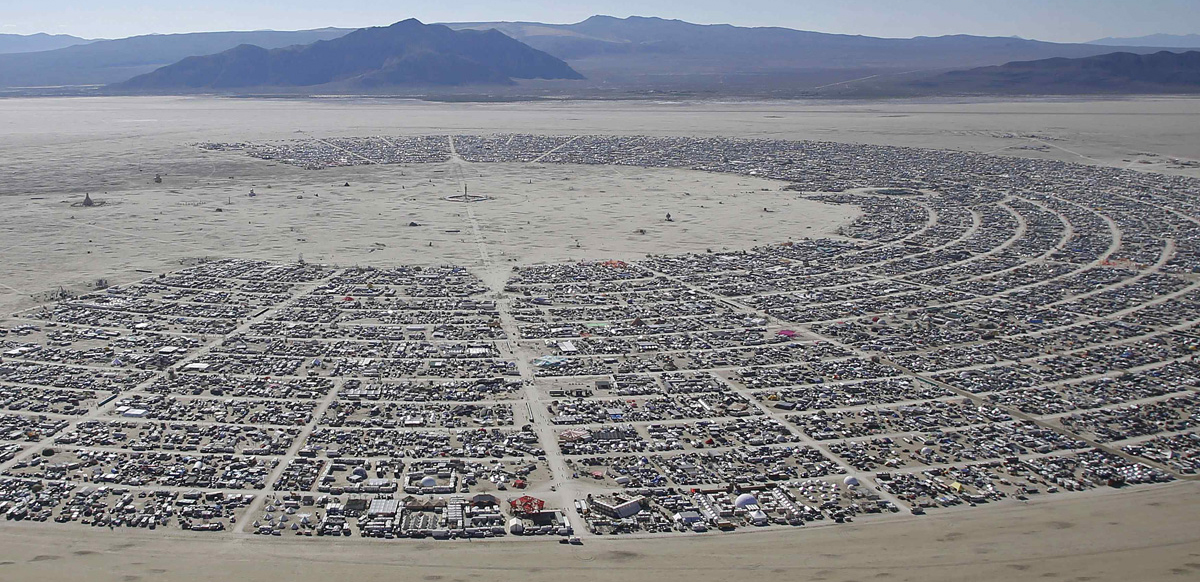When FBW began its Plan for the Hoboken Waterfront in 1990, the first advice we got was to extend the public street grid to the waterfront. The last north-south street delineated the upland private blocks from a contiguous public park at the river’s edge. The extended east-west streets provided easy access to the waterfront park. So we found this New York Times article especially intriguing. To follow are some excerpts:
Nobel-winning economist Paul Romer: “Look at Burning Man! They grow to 70,000 people in one week.”
“Mr. Romer’s answer [to the rapid urbanization of developing countries] is to do with this moment what Burning Man does every summer: Stake out the street grid; separate public from private space; and leave room for what’s to come. Then let the free market take over. No market mechanism can ever create the road network that connects everyone. The government must do that first.”
“Mr. Romer, who appreciates a bit of shock value, has been showing aerial images of the city in public talks about urban growth for several years. The world, he says, needs more ‘Burning Man urbanization.’”
“Urbanization in the developed world has largely come to an end; nearly everyone who would move from farmland toward cities already has. This century, the same mass migration will run its course across the rest of the world. And if no one prepares for it — if we leave it to developers to claim one field at a time, or to migrants to make their way with no structure — it will be nearly impossible to superimpose some order later.”
“It will take vast expense, and sweeping acts of eminent domain, to create arterial roads, bus service, trash routes, public parks, basic connectivity.”
“And then 70,000 people go home, and they do it all over again the next year. The planning requires no major expense, he argues. He’s not talking about laying sewer lines, or even paving the roads. Just draw the street grid on the open desert.”
“The proposal forced Mr. Romer to learn the mechanics of cities. He persuaded N.Y.U. to create a new institute devoted to them, and two planning experts gave him an education. Shlomo Angel taught him the foundation of good street grids. Alain Bertaud gave him a framework: Urban planners design too much, while economists cede too much to the market. The answer lies in between — in drawing the street grid on the desert.”
“Burning Man is an even better model for Mr. Romer’s purposes than he knew. The event began in 1986 as a rejection of rules: There was no central authority, no prohibitions, no assigned camping spots. . . ‘And what came out of that was some people getting hurt.’”
“Today, the event’s six ‘founders’ are the people who reconstituted Burning Man after 1996, including Ms. Dubois. The anarchists drifted away. And the founders created a street grid, an early version of what would become a semicircular city with all arterial roads converging on a giant, flammable human figure in the center.”
“They ‘invented a sense of superordinate civic order — so there would be rules, and structure, and streets, and orienting spaces, and situations where people would feel a common purpose together; where people could become real to one another,’ Larry Harvey, one of the founders, recounted in an oral history before his death last year.”
“Most of the structure that has been added since feels invisible to the people who come: the streets that are surveyed to be exactly 40 feet wide, the plazas that steer people together without crowding them . . .”
“‘It’s a metaphor for my sense of economics,’ Mr. Romer said. ‘I picture an economist showing up at Burning Man and saying: “Oh, look! This is the miracle of the invisible hand. All of this stuff happens by self-interest, and it just magically appears.” And there’s this huge amount of planning that actually is what’s required beneath it to make the order emerge.’”
A Nobel-Winning Economist Goes to Burning Man by Emily Badger (New York Times 9-5-2019)


